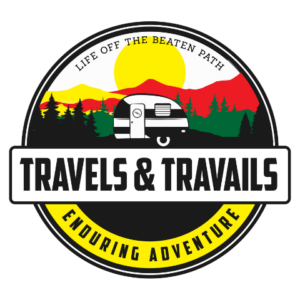There are many reasons people purchase a pop-up camper. I know, because we have owned a few. And if you’re looking to buy a pop-up camper trailer, you’re probably wondering, “what are the disadvantages of a pop-up camper?”
Some disadvantages to owning a pop-up camper are limited living space, limited amenities, set up/take down time, weather limitations, specific maintenance requirements, limited storage space, the potential for leaks, limited privacy, noise, limited resale value, limited off-road capability, and limited insulation.
If you’d like to know more about some of the headaches of owning a pop-up camper, read on.
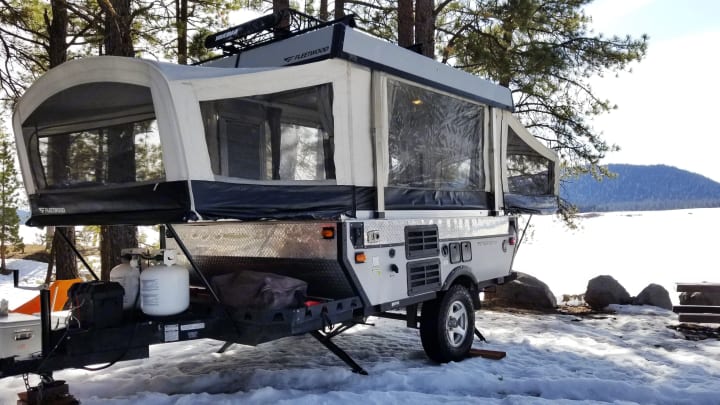
1. Pop-up Campers Have Limited Living Space
While pop-up campers can have a greater interior space when erected, but they are limited in size. This means there is limited living space inside compared to other larger campers like travel trailers or fifth-wheel trailers. Even the largest of pop-up campers is only 21 feet long. In contrast, you can purchase a travel trailer up to 43 feet long
2. Pop-up Campers Have Limited Amenities
Pop-up campers typically have fewer amenities than other RVs, such as a small kitchen and basic bathroom facilities.
In the pop-up campers that we have had, the kitchens have been tiny with no counter space. Our friends have one now, and they end up putting the dish drying rack on the bed. In their trailer, they have a bathroom, but you have to set it up and take it down each time.
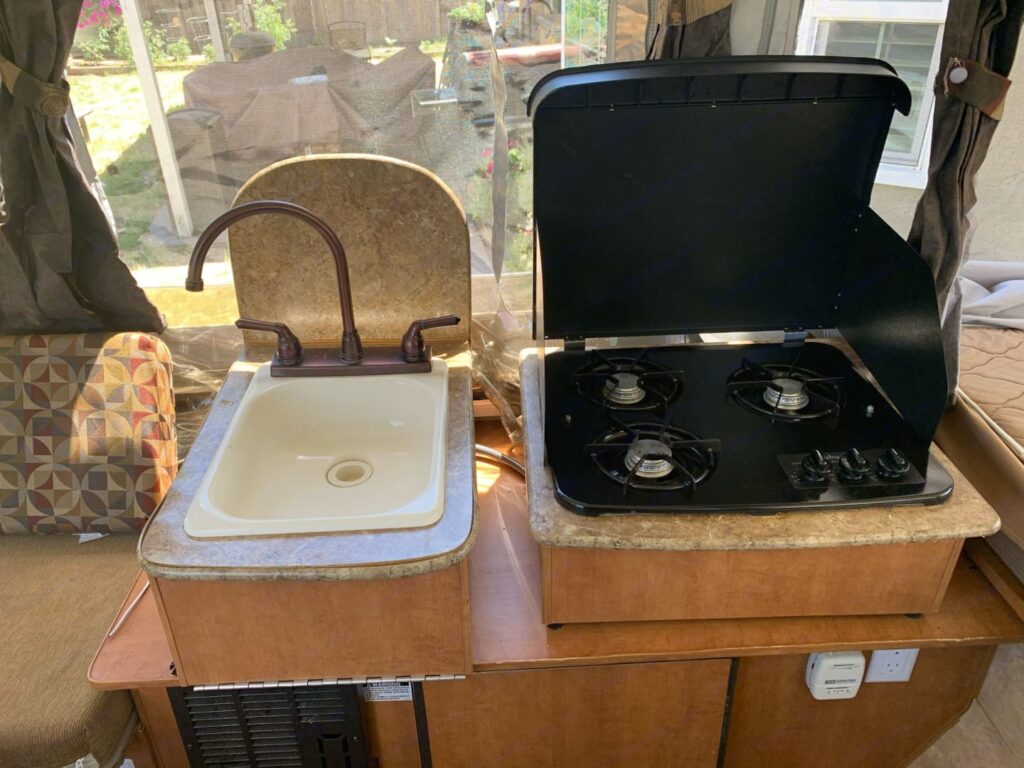
3. Set-up and Take-down Time is Longer
Setting up and taking down a pop-up camper can be time-consuming and may require multiple people to complete it.
The thing I love about our current travel trailer is that we pull into a campsite, unhook, and get in the trailer. Not so if you have a pop-up camper. You will get to camp and spend 20-30 minutes setting it up. When you’re ready to leave, you’ll spend about the same amount of time packing it up.
4. Pop-up Campers Have Weather Limitations
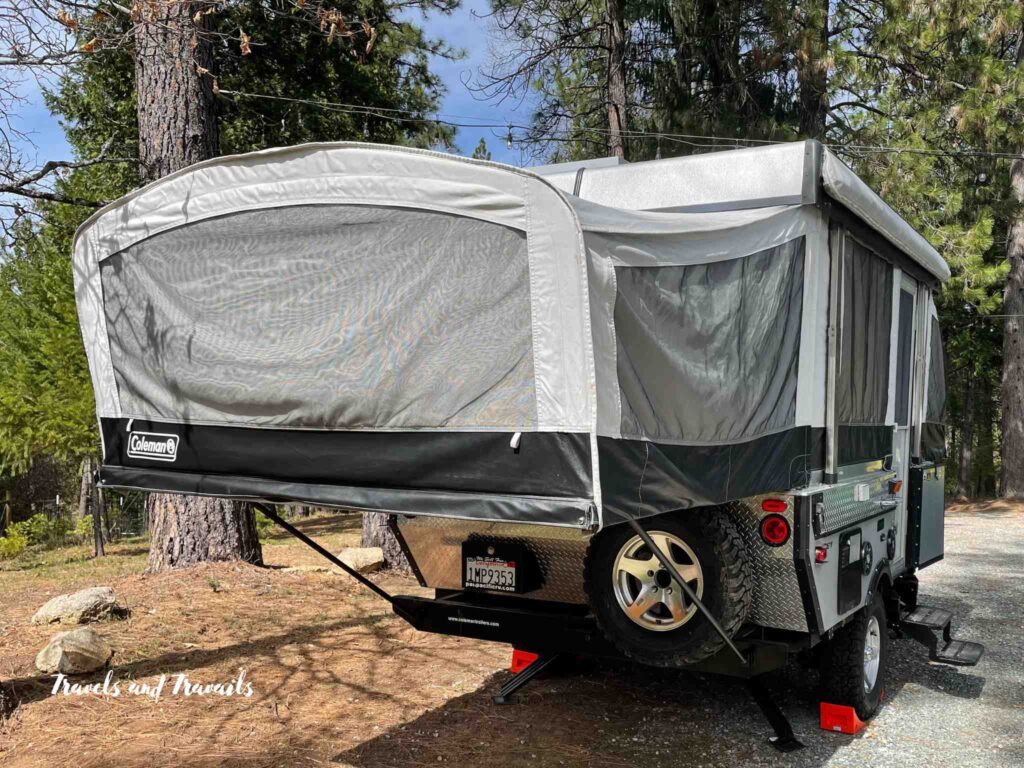
Pop-up campers are not well-suited for extreme weather conditions, such as heavy rain or snow. My husband, Doug bought a hybrid trailer, which is similar to a pop-up camper. He bought it as a temporary living space when our boys moved back in with us.
That winter it snowed and the snow piled on the canvas pop-out over each bed. My son could hardly sit up because the weight of the snow push down on the canvas.
We’ve also camped in the rain in our pop-up camper. It does a pretty good job of keeping the rain out. However, when you get home, you have to set it up and dry it out. Otherwise, you’ll ruin the canvas and be battling mold and mildew.
5. Pop-up Campers Have Maintenance Requirements
Pop-up campers require regular maintenance, including cleaning, lubrication, and inspection of the lifting mechanisms.
All trailers require maintenance, but pop-up campers have some additional mechanisms that need care. The last pop-up camper we owned had a situation where the cable lift mechanism was broken and improperly repaired. My husband figured out how to fix it, but it was a challenge. It turns out that, if you don’t have the top completely unlatched, you can break the cables.
There are some other odd issues with pop-up trailers that you don’t have with other RVs. For example, we almost always had a challenge getting the door on.
Plus, you really have to stay on top of keeping the canvas clean and dry or it will disintegrate.
6. Pop-up Campers Have Limited Storage Space
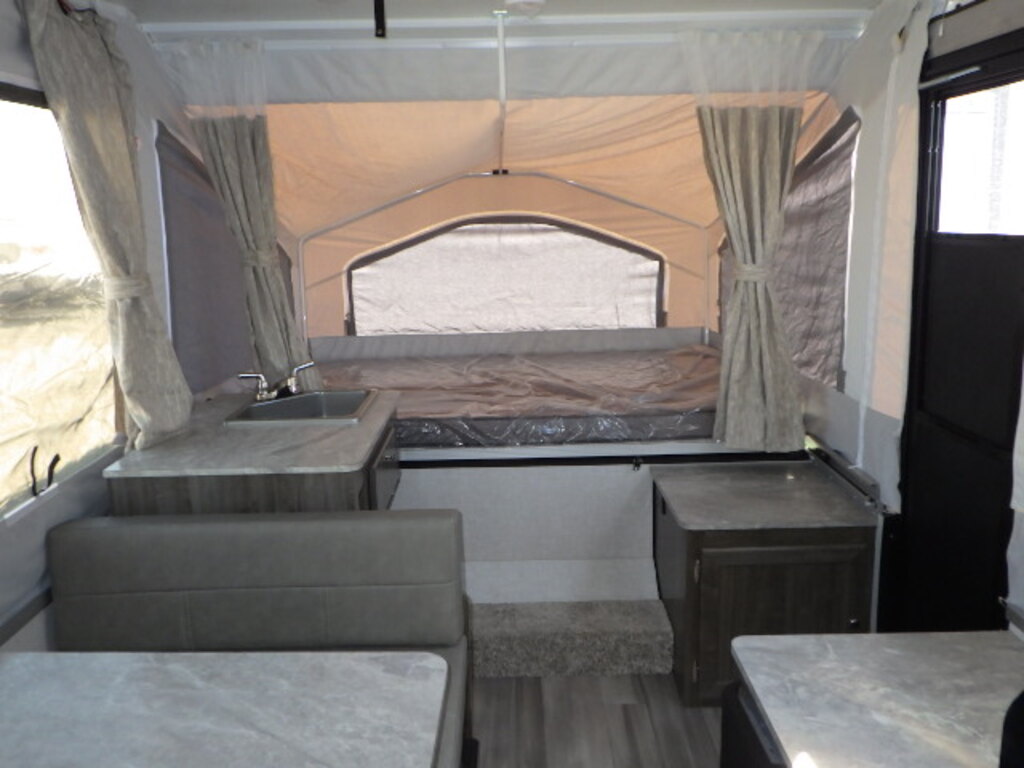
Due to their smaller size, pop-up campers have limited storage space for gear and supplies.
We had a Coleman Evolution trailer. For its size, I was surprised at how little storage space it had. When you close pop-up campers, they fold in on themselves. The beds slide in and then the top goes down, so there is very little space left to store items.
7. Pop-up Campers Have a Potential For Leaks
The canvas material used for the walls and roof of a pop-up camper can be prone to leaking if not properly maintained or sealed.
As I mentioned, you really need to stay on top of the canvas. If you are sold on a pop-up camper, consider one that uses a synthetic material, like vinyl, as opposed to canvas. Either way, the material will be subject to condensation.
And even if the canvas isn’t leaking, if you push up against it, you’re likely to have water enter the camper.
8. Pop-up Campers Have Limited Privacy
Pop-up campers offer limited privacy compared to other types of RVs, as the walls are made of canvas and are not soundproof.
If you have the light on at night, people can see your silhouette. And if they are close enough, they can hear what you are saying.
9. Pop-up Campers Allow More Noise
The canvas material used for the walls and roof of a pop-up camper may not provide adequate sound insulation, which can be a problem if camping in a noisy area.
We camped at a campground that had a major road and a major highway close by. The road noise was deafening. I couldn’t sleep all night. If you’re buying a pop-up camper, get earplugs. You’ll need them.
10. Pop-up Campers Have Limited Resale Value
Pop-up campers generally have a lower resale value than other types of RVs due to their limited amenities and smaller size.
Pop-ups are the condos of the camping world. When the market is down, they’ll be the last to be sold.
11. Pop-up Campers Have Limited Off-road Capability
Pop-up campers are not designed for off-road use and may have limited ground clearance or suspension, which can limit where they can be taken.
As a caveat, there are some off-road pop-up campers. However, most are not meant for off-road use. We bought the Coleman Evolution thinking that we could take it off road. The first time we used it, we got stuck in the sand. And, the thing was so wide that we nearly took out a fence.
12. Pop-up Campers Have Limited Interior Height
Pop-up campers have lower interior heights than other types of RVs, which can be uncomfortable for taller individuals.
Most of the pop-up campers that we have owned have had enough head clearance. But if you’re really tall, pay attention to the interior height of the trailer before you buy.
13. Pop-up Campers Have Limited Insulation
Pop-up campers are not well-insulated, which means they can be uncomfortable in extreme temperatures.
We have camped in some pretty low temperatures and I have been cold. If you choose to buy a pop-up, keep that in mind. If your camper has a heater, it may not be able to keep up in really cold temperatures. Likewise, if you don’t have an air conditioner, plan on the camper being at a similar temperature to the outside.
One time when we went camping, my sister and brother-in-law used our hybrid camper. Now the hybrid camper is at least partially insulated – only the ends have the canvas. It was hot that weekend. The camper had a fan, but even with that, it was uncomfortably warm.
If you’d like some tips on using your pop-up camper in wet weather, read this article.
14. Pop-up Campers Have Limited Durability
Pop-up campers are generally less durable than other types of RVs due to their lightweight construction.
And, as I mentioned, there are additional parts that can break that you wouldn’t have in a travel trailer. the walls have a mechanism to raise the roof, the beds have a mechanism to push them to the interior of the camper, and the door has to be attached each time.
15. Pop-up Campers Can Be Difficult to Clean
The canvas material used for the walls and roof of a pop-up camper can be difficult to clean and maintain.
Again, I can’t stress how important it is to keep the canvas clean and dry. Even if you get the vinyl siding, it still needs to be treated with kid gloves.
16. Pop-up Campers Have Limited Customization Options
Pop-up campers offer limited customization options compared to other types of RVs.
You can find several travel trailers that have bunk beds. Heck, there is even a teardrop that has a bunk bed option. But it’s difficult to find these types of configurations in a pop-up trailer.
17. Pop-up Campers Have Limited Sleeping Options
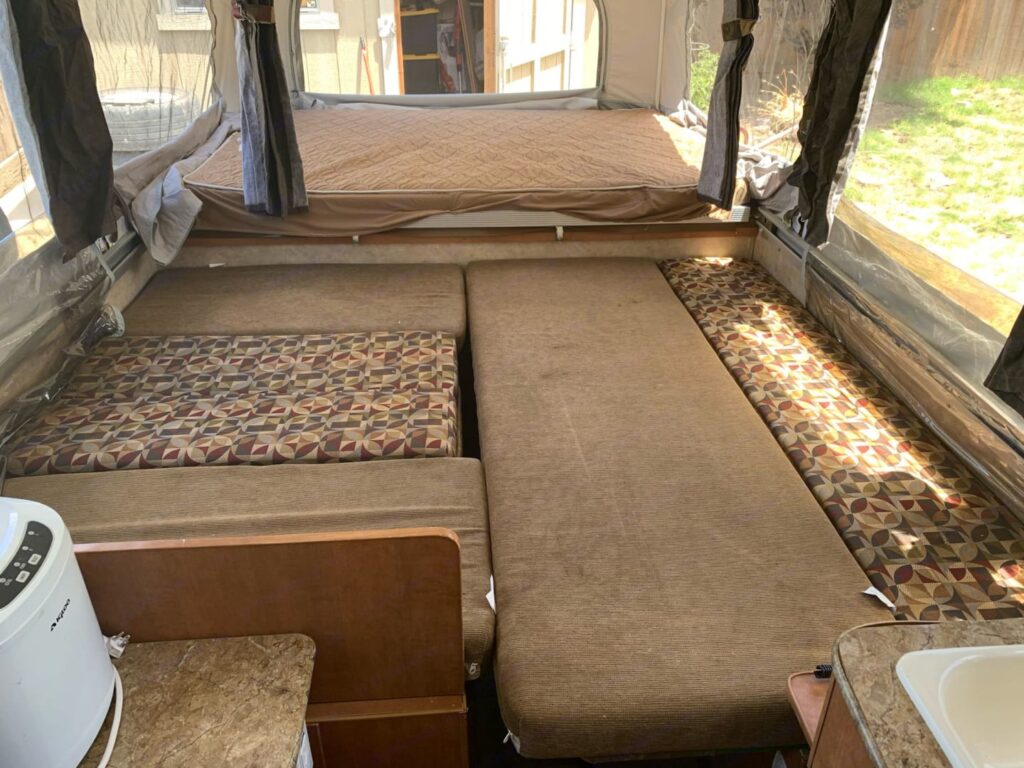
Pop-up campers are generally designed to sleep two to six people, which may not be enough for larger families or groups.
Because of the design, there are only so many floorplans that can be designed in a pop-up camper. Generally, two can sleep on the bed on one end cap, and two on the other. Depending on the size of the trailer, you may be able to sleep either one or two people in the convertible dinette.
The largest pop-up trailer I’ve seen, the Forest River Rockwood, sleeps eight people. But that’s the only one I’ve seen like it. And realistically, that’s going to be four adults and four children.
18. Pop-up Campers Have Limited Bathroom Facilities
Pop-up campers usually have basic bathroom facilities, such as a cassette toilet or no toilet at all.
That was the biggest downside of our Coleman Evolution. It didn’t have a bathroom at all. However, we carried a porta potty and there was a place to store it. In my opinion, that was less than ideal. As I mentioned, our friends have a pop-up that does have a bathroom, including a shower. They never set it up or use it though. It’s a little tricky to set up.
19. Pop-up Campers Have Limited Storage Options
Pop-up campers have limited storage space, which can be a problem for longer camping trips or for carrying larger items like bicycles or kayaks. If you’re carrying these items on top of the camper, you’ll have to take them off every time you set it up. That works if you plan to camp at one place for a while. But it’s a hassle if you move campsites frequently.
20. Pop-up Campers Have a Higher Risk of Theft
Pop-up campers are easier to steal than other types of RVs due to their lightweight construction and smaller size.
Really, all a thief has to do is cut the canvas then reach in and open the door. Boom! They’re in.
If you’d like to know 13 reasons why a pop-up is better than a tent, read this article.
Conclusion
While there are many reasons not to buy a pop-up, there are just as many reasons why people do buy them. I’m not trying to dissuade you – I’m attempting to enlighten you so you know what you’re getting into.
